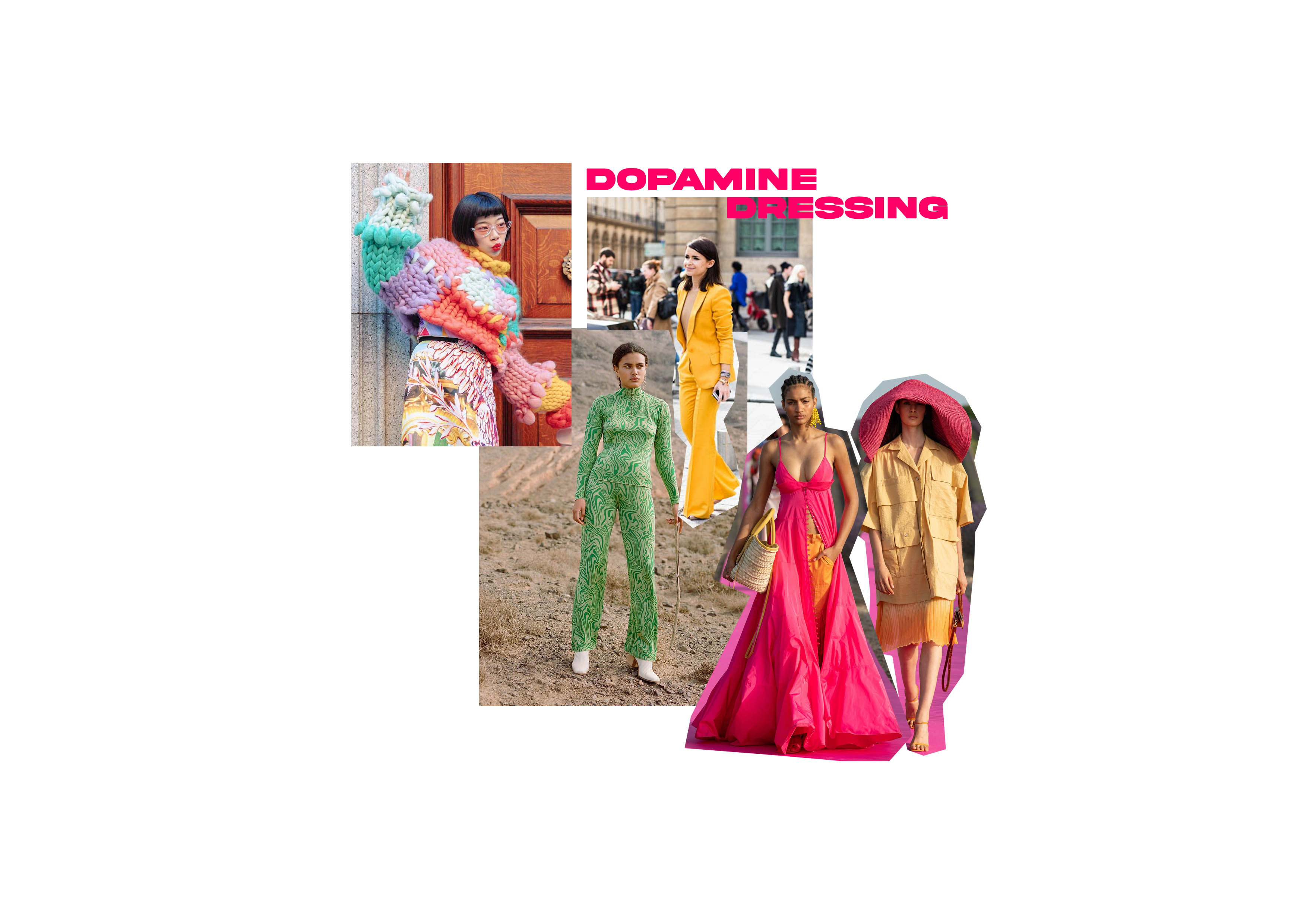
Fashion is psychological, it has to be to work. The whole industry works around the idea of how consumers will react to a certain colour, fabric, shape etc. To explain, fashion psychology is the study of fashion against human behaviour, which is greatly important.
A pyjama day never feels as good as the thought. The grogginess of sleep weighing you down in your clothes, but when you get washed and changed it feels uplifting. The excitement of finally wearing the dress you have been saving for the right occasion, the way if something does not fit slightly right it can ruin your whole day. Your brain reacts to what you wear without you even realising.
So, this brings in the question, can we dress ourselves happy?
Dopamine dressing is the idea that considering colour and fun elements when you get dressed can lift your mood. People may think this concept is crazy, how would a piece of fabric impact your mood so much? I think society often forget that they are just humans with a body and mind of their own. We are not going to understand everything, this is why you should look at yourself and your clothes as a relationship.
Fashion Psychologist Dawnn Karen author of Dress Your Best Life goes as far to prescribe people certain elements. In an article by Rosana Lai for Hong Kong Tatler, Karen states that she prescribed wearing the colour yellow in every outfit for a physician who, at the time was treating COVID-19 patients, and was feeling extremely depressed. “Within days it brightened her mood,” this is bizarre on first read but it makes sense.
Yellow is a ‘happy colour’, would wearing this act as a reminder to remember things will be okay? Now, each colour holds its own connotations and depending where you are from this could change too. Black is for mourning in Britain but then white is in China, so arguably a wardrobe full of black would be more depressing for someone in Britain than in China. Red is quite a sultry and dangerous colour, so this colour surely would make you feel more confident and attractive. Each colour holds its own thoughts for each individual, but I believe true ‘dopamine dressing’ goes further than colour.
It is a common thought that “you should wear your clothes, not them wear you,” and it’s assumed this is meant about sizing and fit but what if it has deeper meaning than that? What if it’s due to the emotions you gain from an outfit? Say if you chose to wear an outfit and then spend the whole day regretting it. This is letting the clothes wear you, dictate how you feel.
When you get dressed, you should be having a thought process. Asking yourself about does this colour make me happy? Is this pattern is satisfying to look at? Does this fabric feel nice? All these questions make a relationship between yourself and the clothes, leading to you wearing the clothes not them wearing you. We have all been walking past a reflection in a rush, caught a glimpse of ourselves and then felt bad, but maybe if we wore uplifting clothing due to this thought process, this would not be such a dreaded interaction.
If you have ever watched Tidying Up with Marie Kondo on Netflix you have surely grown to love her. Her specific tidying technique makes people reflect when they go through their houses and ask the almighty question “Does this spark joy?” about each item. This is what we should be doing when we shop and when we get dressed.
In a way, we are what we wear. If you wear something you don’t feel comfortable in then this will be picked up by others. Just like how if you feel comfortable you’ll feel more confident. Clothing is just another body language, In the words of renowned writer Virgina Woolf clothes can “change our view of the world and the world’s view of ourselves.” So, when you get dressed ask yourself if it sparks joy. Evaluate how certain colours and fabrics make you feel. Everyone desires confidence and this often comes hand in hand with happiness.